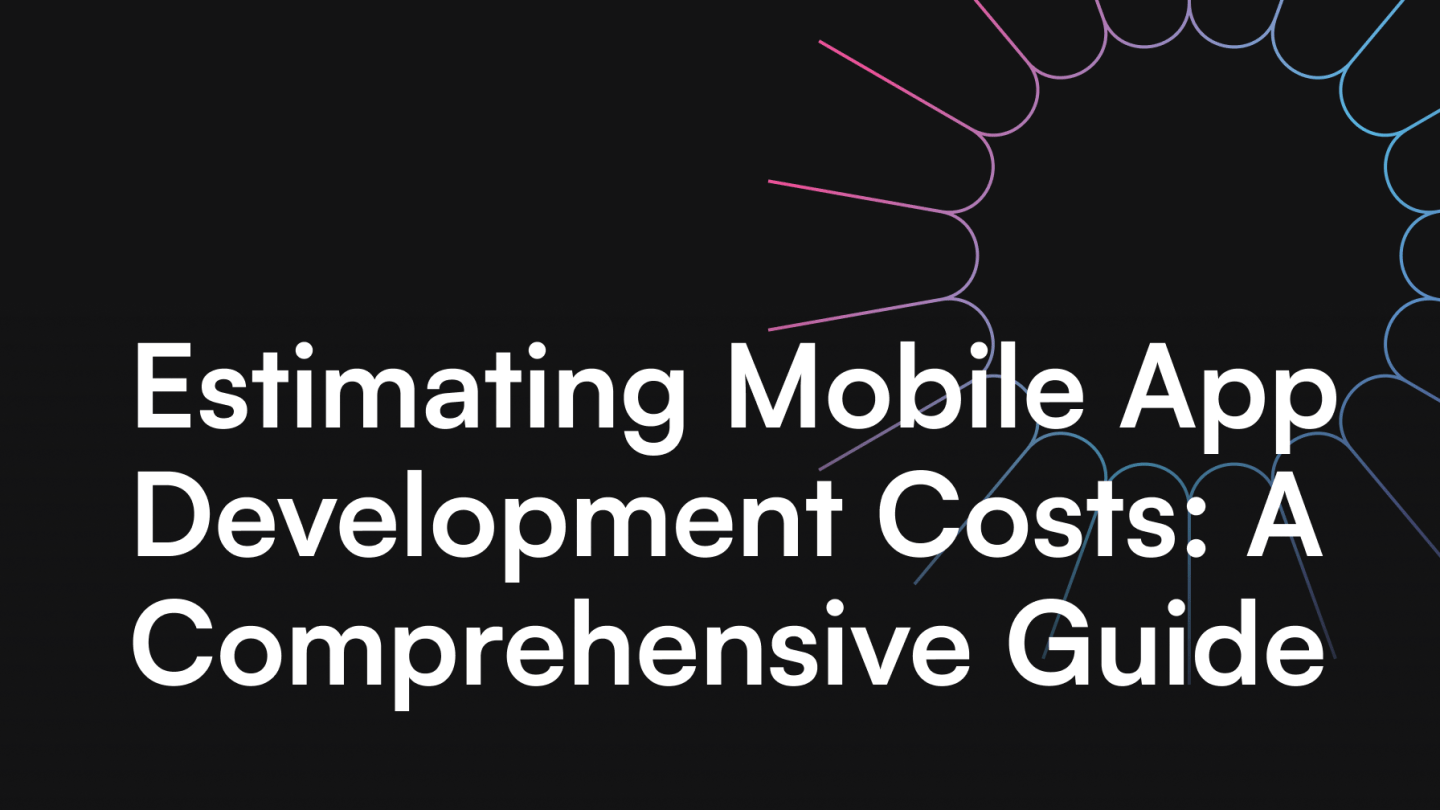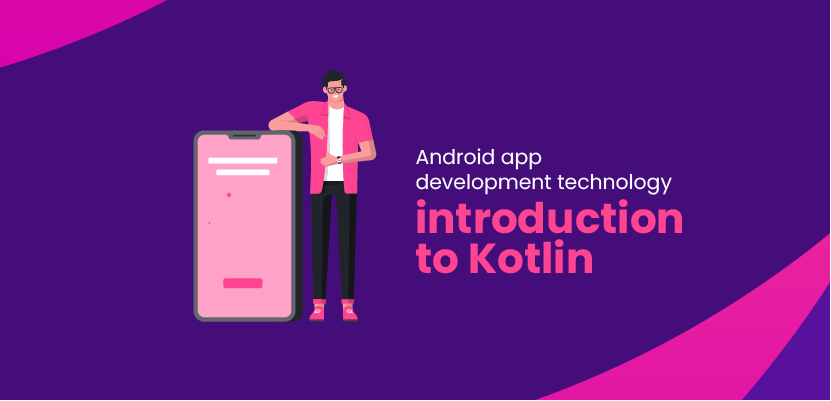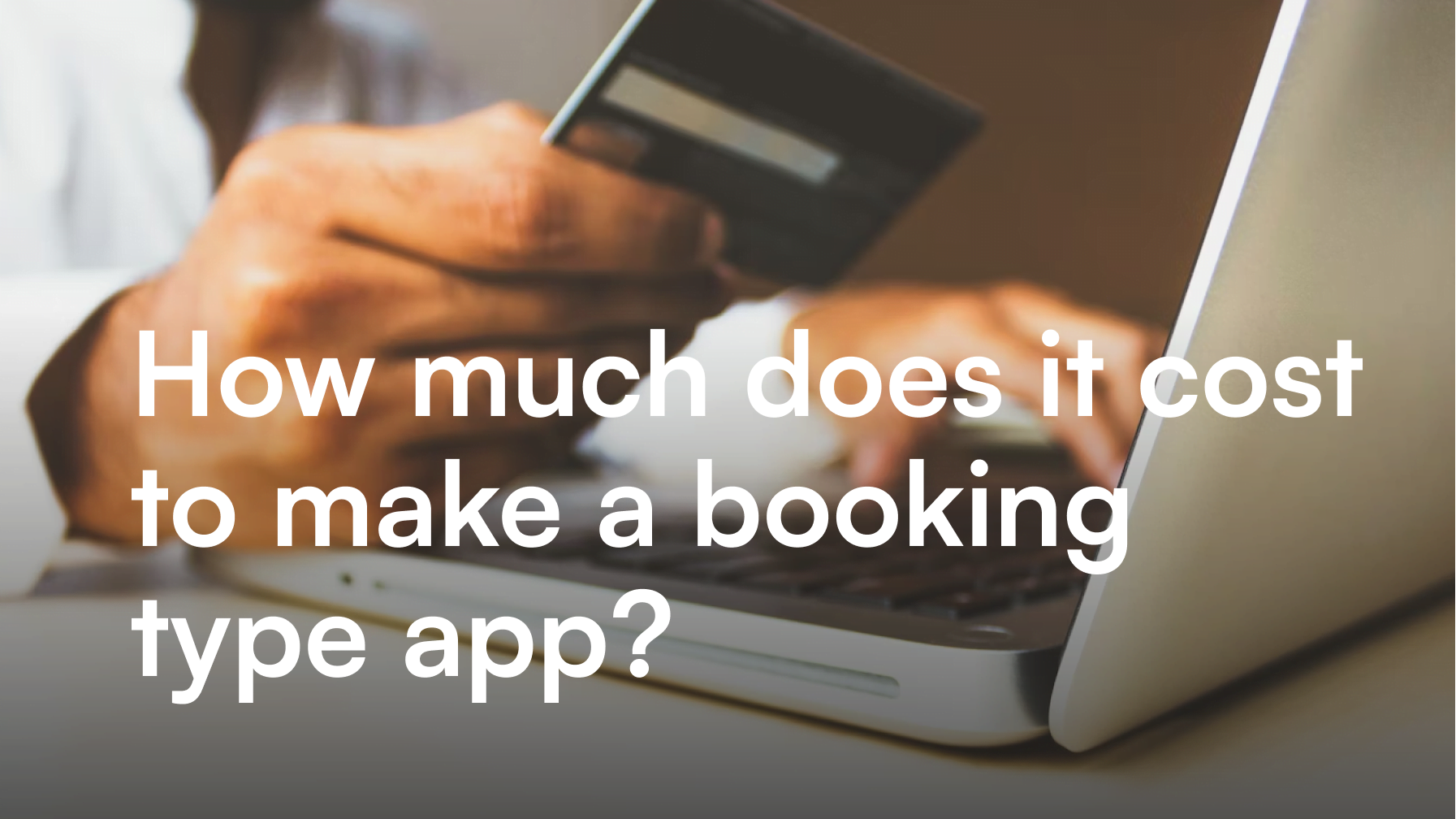Estimating Mobile App Development Costs: A Comprehensive Guide

Krzysztof Hubnicki

In the fast-paced world of technology, developing a mobile application is a task that can reap substantial benefits but also requires significant investment. Estimating the cost of mobile app development is crucial not only for effective budget management, but also for understanding the scope of the project. It provides a realistic view of the resources required, ensures economic feasibility, and helps avoid unexpected expenses. This guide aims to provide comprehensive insights into the cost estimation process, ensuring your venture into mobile app development is well-informed and financially sound.
Table of contents
1. Introduction
- Brief Overview of the Importance of Cost Estimation in Mobile App Development
2. Understanding Mobile App Development
– Key Aspects of Mobile App Development
– Different Types of Mobile Applications
3. Factors Influencing Mobile App Development Costs
– Complexity and Size of the App
– Platform Choice (iOS, Android, Both)
– User Interface and User Experience Design
– Backend Development and APIs
– Location and Structure of the Development Team
– Maintenance and Updates
4. Stages of Mobile App Development Process and Their Costs
– Pre-Development Stage (Research, Planning, and Wireframing)
– Design Stage (User Interface and User Experience)
– Development Stage (Coding and Testing)
– Post-Launch Stage (Updates, Bug Fixes, and Maintenance)
5. Methods for Estimating Mobile App Development Costs
– Fixed Price Model
– Time and Material Model
– Dedicated Team Model
6. How to Reduce Mobile App Development Costs
– Effective Planning and Requirement Analysis
– Prioritizing Features and Functionality
– Adopting a Minimum Viable Product (MVP) Approach
– Outsourcing Vs In-house Development
– Using Cross-platform Development Tools
7. Tips for Accurate Cost Estimation
– Ensuring Clear Communication with the Development Team
– Taking into Account Unexpected Costs
– Regularly Revisiting and Revising the Budget
8. Conclusion
– Summary and Key Takeaways
Understanding Mobile App Development
Mobile app development is an intricate process that involves transforming a viable idea into a functional application for mobile devices. While it might seem straightforward at the onset, it is a complex procedure that is deeply interconnected with several crucial elements.
Understanding mobile app development requires one to be familiar with the different types of mobile applications first. These include native apps, developed specifically for one platform, either iOS or Android; hybrid apps, which are essentially websites packaged in a native wrapper, and function on multiple platforms; and web apps, which are websites designed to function on mobile devices.
Then comes the knowledge about the technology stack used in mobile app development. It varies greatly depending on the type of app, its features, and the platform it’s built for. For instance, Swift and Objective-C are commonly used for iOS apps, while Kotlin and Java are used for Android apps.
Another critical component in mobile app development is the User Interface (UI) and User Experience (UX) design. An app’s success largely depends on its ease of use and intuitiveness, making UI/UX design a crucial part of the process.
Mobile app development also involves the use of APIs (Application Programming Interfaces), which allow apps to interact with other software components. These are essential for integrating various features such as payment gateways, social media sharing, and location services.
Finally, understanding mobile app development isn’t just about the creation process. It extends to post-launch maintenance, updates, and customer service. All these elements contribute to the cost of app development, making it necessary to comprehend them in order to effectively estimate the expenditure.
Factors Influencing Mobile App Development Costs
Determining the cost of mobile app development isn’t a one-size-fits-all process. It depends on a multitude of factors that vary from one project to another. Let’s delve into these elements to get a clearer picture.
Complexity and Size of the App: A simple app with basic functionality will cost significantly less than a complex app with advanced features like data synchronization, user authentication, complex backend, etc. The size refers to the number of screens/pages in the app. More screens mean more design, development, and testing effort, thus higher cost.
Platform Choice (iOS, Android, Both): The chosen platform also affects the cost. Developing for one platform (iOS or Android) is less costly than creating a cross-platform app. However, depending on your target audience, you may need to consider developing for both platforms.
User Interface and User Experience Design: A well-designed UI/UX is crucial for app success. Complex designs with custom graphics, animations, and transitions will require more effort, hence increased costs. Simpler designs, on the other hand, will be less expensive but might not stand out in the crowded app market.
Backend Development and APIs: If your app needs to fetch data from a server or requires real-time synchronization (like in a chat app), a backend server will need to be developed, increasing costs. Similarly, if your app needs to interact with other apps or services using APIs, it will require additional development effort.
Location and Structure of the Development Team: The location of your development team significantly influences the cost due to varying labor rates. Developers in North America tend to be more expensive than those in Asia. Additionally, a larger team with specialized roles (UI/UX designers, front-end and back-end developers, QA testers) will ensure a high-quality app but will also increase costs.
Maintenance and Updates: Post-launch costs like server costs, emergency maintenance, app updates, and customer support are often overlooked but should be factored into the overall budget. Regular updates to keep up with platform changes (like new OS releases) and new feature additions are also a part of the total cost.
Understanding these factors is key to obtaining a realistic estimate of mobile app development costs and ensuring the financial success of your project.
Stages of Mobile App Development Process and Their Costs
Pre-Development Stage (Research, Planning, and Wireframing): Before any actual development begins, there’s a crucial stage of research and planning. It includes market research, understanding user needs, competitive analysis, and defining the app’s core functionality. Then comes wireframing – sketching a rough visual guide of the app’s layout and flow. This stage also includes preparing detailed specifications which serve as a roadmap for developers. Although this stage may not involve heavy costs, it’s essential for successful development and shouldn’t be overlooked.
Design Stage (User Interface and User Experience): Designing an app’s UI/UX can range from simple to complex, impacting costs. A basic design with standard UI components costs less, but a unique, custom design that enhances user experience can increase costs significantly. This stage involves creating the look and feel of the app, designing icons, screens, and user interaction processes.
Development Stage (Coding and Testing): The costliest and most time-consuming stage is coding. The cost varies depending on the platform (iOS, Android, or both), the complexity of features, and whether you’re building a native or hybrid app. During this stage, quality assurance (QA) testing is also performed to identify and rectify any bugs, ensuring the app works smoothly across all targeted devices.
Post-Launch Stage (Updates, Bug Fixes, and Maintenance): Once the app is launched, regular updates, bug fixing, and maintenance come into play. These ongoing costs include updating the app for new OS versions, adding new features based on user feedback, ensuring server uptime, and possibly marketing costs. It’s not a one-time expense, so you need to factor in these costs over the app’s lifespan.
Each stage is equally important and skimping on any stage can significantly affect the quality of the final product. Therefore, understanding these stages and their costs is essential for an accurate estimate of the overall mobile app development budget.
Methods for Estimating Mobile App Development Costs
Fixed Price Model: Under this model, itCraft estimates the total cost of the project based on the defined requirements and specifications before the development starts. This method is most suitable for small projects with clear, unchanging requirements. The main advantage is that the client knows the exact cost upfront, helping with budget planning. However, it lacks flexibility for changes or additions once the project is underway.
Time and Material Model: This model is based on the actual time and resources utilized on the project. Clients are billed according to the hours worked by the development team. This approach is suitable for projects where requirements are expected to evolve or are not fully defined at the beginning. It offers high flexibility as changes can be made during the development process, but the final cost might exceed the initial estimates if the project scope expands or unexpected challenges occur.
Dedicated Team Model: In this model, itCraft provides a dedicated team of professionals who work exclusively on your project. The cost is based on the team size and composition, and the time they spend on the project. This model is ideal for long-term projects where requirements might change over time. It gives you greater control over the development process and ensures that the team is fully invested in your project.
At itCraft, we understand that each project is unique. Therefore, we offer these different pricing models to cater to the specific needs and requirements of each client. Our main goal is to deliver high-quality mobile app solutions in a cost-effective and transparent manner. Before deciding on a pricing model, we thoroughly discuss the project with the client to ensure that the chosen model aligns with their project goals and budget.
How to Reduce Mobile App Development Costs
When embarking on the mobile app development journey, one common concern among businesses is the associated cost. However, there are strategic ways to keep these costs under control without compromising the quality of the final product.
Effective Planning and Requirement Analysis
Comprehensive planning at the outset can save both time and money down the line. A clear understanding of your target audience, the app’s purpose, and its key functionality requirements is crucial. This also helps avoid unnecessary revisions or feature additions in later stages, thus preventing cost overruns.
Prioritizing Features and Functionality
Rather than trying to incorporate every possible feature at once, it’s more cost-effective to focus on the core features that serve the main purpose of the app. This ‘Minimum Viable Product’ (MVP) approach allows you to launch a functional app at a reduced cost and then incrementally add more features based on user feedback.
Adopting a Minimum Viable Product (MVP) Approach
Adopting a Minimum Viable Product (MVP) Approach – An MVP is a product with just enough features to satisfy early customers while also providing feedback for future product development. This strategy focuses on developing and releasing a version of the app with only the most essential features that bring users the most value. It allows for a quicker market release and feedback collection from users before more time and resources are invested into developing more complex features. This way, instead of trying to predict all the possible features that might come to the product owner’s mind, focus can be placed on what truly matters to the users. This mindset is critical for prioritizing features by the product owner throughout the project’s lifetime. Moreover, with appropriate management, an MVP approach can significantly lower mobile app development costs, a valuable advantage in the face of limited budgets.
Outsourcing Vs In-house Development
Hiring an in-house team can be costly, especially if you need various specialists for a short time. Outsourcing to a reliable app development company like itCraft can be more cost-effective. They have the expertise, experience, and resources to deliver quality work, and you only pay for the services you need.
Using Cross-platform Development Tools
Developing separate apps for iOS and Android can be expensive. By using cross-platform tools like Flutter or React Native, developers can write code once and use it for both platforms. This not only reduces development time but also leads to significant cost savings.
In summary, while the cost of app development can be substantial, a smart strategy and the right development partner can help manage and reduce these costs. Remember, the cheapest option is not always the best. The focus should be on achieving value for money, ensuring the app serves its purpose effectively and provides a good return on investment. With careful planning and smart decision-making, it’s entirely possible to develop a high-quality app on a budget.
Tips for Accurate Cost Estimation
Ensuring Clear Communication with the Development Team
Open and continuous communication with your development team is critical for accurate cost estimation. As a client, you should be clear and precise about your requirements, expectations, and budget. At itCraft, we value transparency and encourage clients to discuss their project thoroughly with us. This helps in understanding the project scope better, eliminating misunderstandings, and providing an accurate estimate.
Taking into Account Unexpected Costs
No matter how well you plan, there will always be some unforeseen expenses during the app development process. These could be due to sudden changes in requirements, extra time spent on bug fixing, or additional features requested by users after launch. Therefore, it’s wise to set aside a contingency fund as part of your budget. This prepares you for unexpected costs and ensures that the development process isn’t hampered due to budget constraints.
Regularly Revisiting and Revising the Budget
Mobile app development is a dynamic process, and costs can fluctuate based on a variety of factors. For example, additional features may be needed, or development could take longer than expected. It’s important to revisit and revise your budget periodically, keeping track of the actual spend against the estimated cost. This will help identify if the project is on track financially, and if not, corrective actions can be taken early.
In conclusion, accurate cost estimation is not a one-time task but a continuous process. It requires clear communication, preparing for unexpected costs, and regular budget review. Following these tips will not only provide a more accurate cost estimate but also ensure a smooth development process. And remember, an investment in a mobile app is an investment in your business’s future. By prioritizing and planning correctly, you can ensure this investment gives you a high return in the long run.
Conclusion: Summary and Key Takeaways
Building a mobile app can be a significant investment, but it’s one that can yield substantial rewards when done correctly. Throughout this guide, we’ve walked you through the process of mobile app development, explored the factors that influence costs, discussed different cost estimation methods, and offered tips on how to reduce costs and make accurate cost estimates.
Remember that app development isn’t just about coding. It begins with effective planning and understanding the app’s purpose and target audience. The development process involves several stages, each with its associated costs. The choice of platform, the complexity and size of the app, UI/UX design, backend development, and the structure of the development team all significantly impact the total cost.
In terms of cost estimation, itCraft offers various models like the Fixed Price, Time and Material, and Dedicated Team Model, each with its pros and cons, suiting different project needs. You can control and reduce development costs by adopting strategies like effective planning, prioritizing features, outsourcing, and using cross-platform development tools.
Since our establishment in 2010, itCraft has been delivering high-quality web and mobile app solutions, using technologies like Flutter, to clients worldwide, predominantly from the USA. Over the years, we’ve learned that while the cost is a vital factor, the key to a successful app lies in its quality and ability to meet user needs effectively.
So, as you embark on your app development journey, focus on creating an app that provides value to its users, and don’t compromise on quality to save costs. After all, an app is not just a product; it’s an investment into your business’s digital future. Partner with a reliable development company like itCraft, who can guide you through the process and help you make this investment count.






